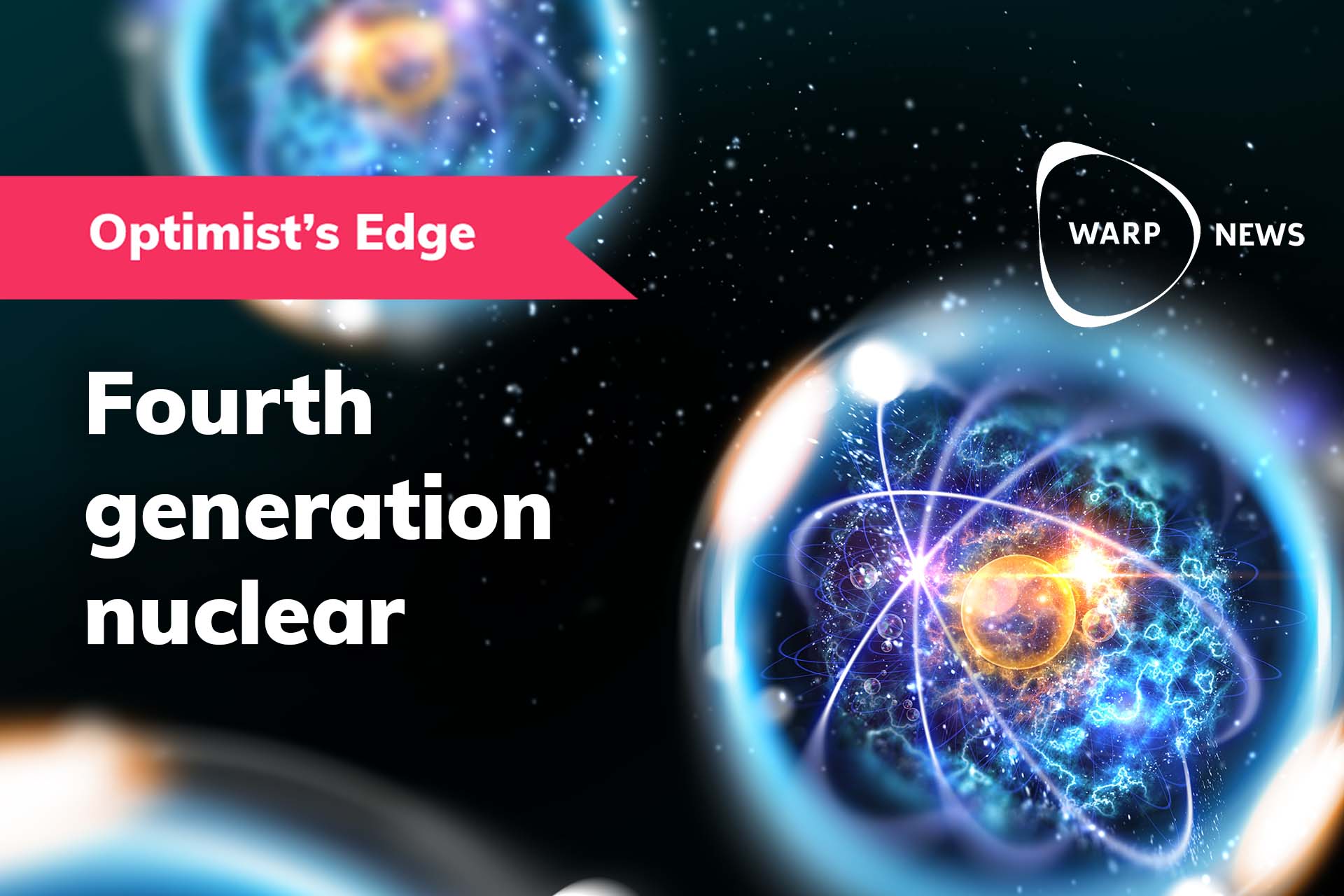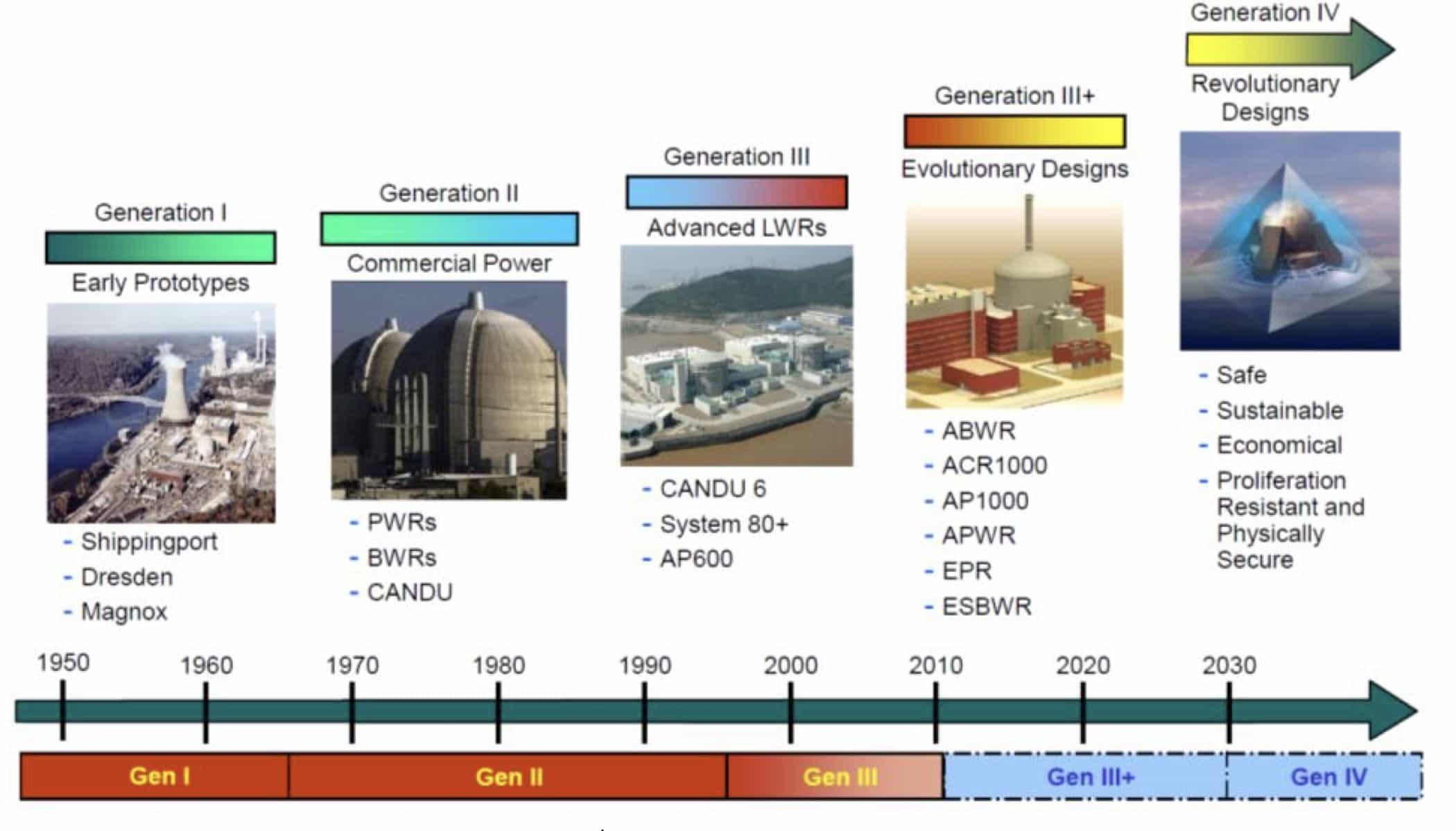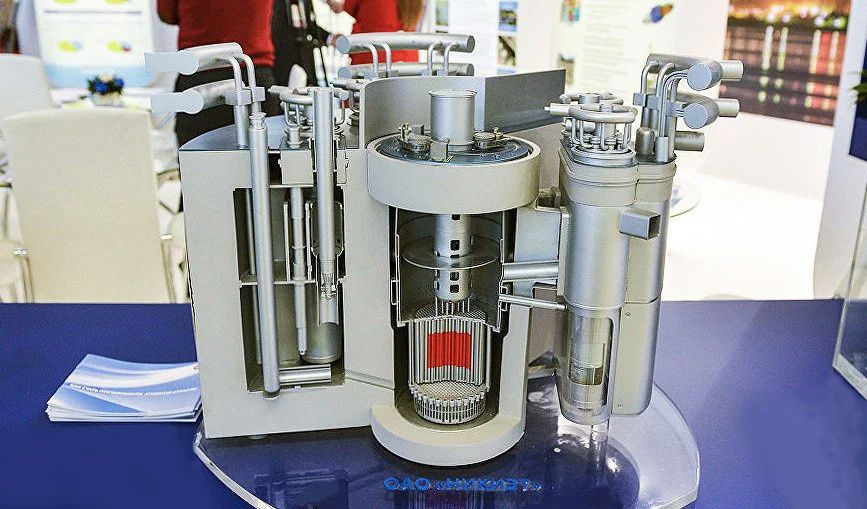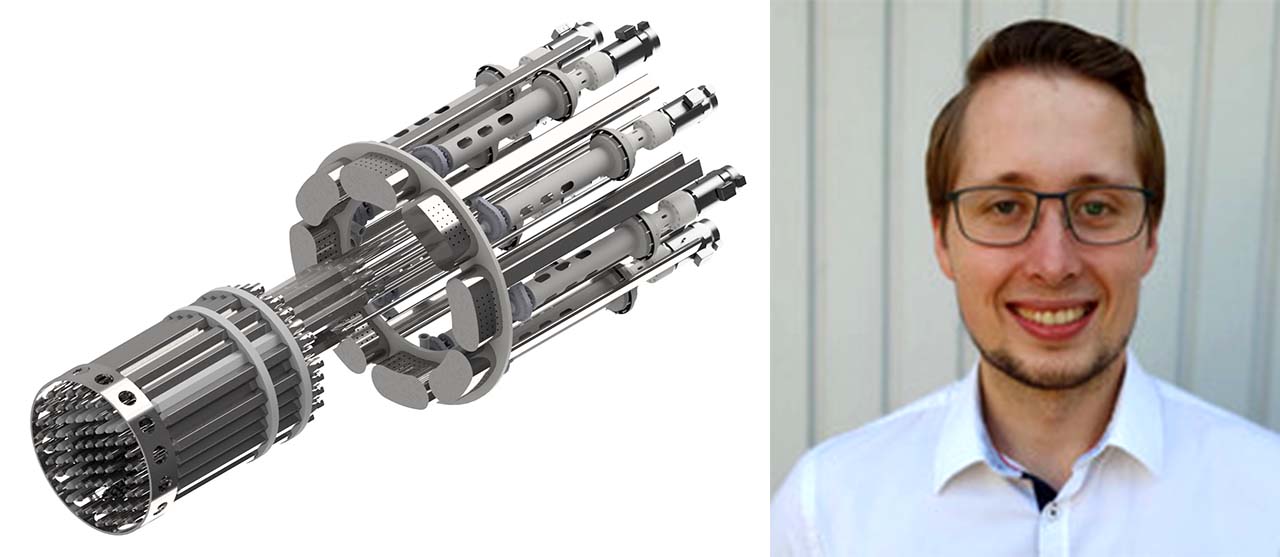
💡 Optimist's Edge: This is what you need to know about the nuclear power of the future
The fourth generation nuclear power is not that far away and has greater benefits than you think. In this article, two experts reveal everything you need to know about the energy production of the future.
Share this story!
Summary
📉 What people think
Engagement in nuclear power has increased in connection with engagement in climate change. Both Swedish and American studies show that support for nuclear power is now at a record high.
The latest Swedish survey shows that 46 percent want to keep nuclear power and, if necessary, build new reactors. We see the same trend in the US. 76 percent support nuclear power, the highest support since the survey was first conducted in 1983.
📈 Here are the facts
The fourth generation of nuclear power is not just about new reactors. It is a coherent system where the waste created by previous generations is recycled and used as fuel. This closes the fuel cycle. The new generation "cleans up" after the old one and is thus the purest and most efficient form of nuclear power.
💡 Optimist's Edge
In today's reactors, no more than about five percent of the uranium stored in the reactor is consumed during operation. The rest is waste. In the fourth generation of nuclear power, up to 99 percent of the energy in natural uranium can be extracted. What is today seen as a problem, nuclear waste, becomes a resource that will last for thousands of years to come with the fourth generation of nuclear power.
This is not 20-30 years away as it is sometimes talked about. Brest-300 is currently being built and will be the first complete Gen IV plant in the world when it starts supplying electricity in 2026.
👇 How to get the Optimist's Edge
A concrete way to support the development is to change electricity companies to something that only sells nuclear power. Several of them have chosen to dedicate part of the income from the sale of electricity to research grants or support for the development of specific projects.
Another way is formation of opinion. This is something everyone can contribute to. Last but not least. Learn more! Our experts give you tips on electricity companies and further reading in the full article.

📉 What people think
Engagement in nuclear power has increased in connection with engagement in climate change.
The latest Swedish survey, conducted by Novus in May 2021, shows that people want to keep nuclear power and, if necessary, build new reactors. This is the highest support for nuclear power since the survey was first conducted in 2006.

An interesting trend is that the part of the younger age group, 18-29 years, who want to phase out nuclear power with political decisions has decreased from 30 to 10 percent in four years.
We see the same trend in the US. 76 percent support nuclear power in Bisconti's latest survey. This is the highest level of support since the survey was first conducted in 1983.

So what about fourth generation nuclear power? We asked the question, "What do you think about fourth-generation nuclear power?" in Warp News' Swedish Facebook group and received 644 responses.
75 percent answered that it is "Absolutely crucial – full speed ahead, so we get it in place," while 14 percent answered, "Uninteresting – we should not invest in nuclear power." 11 percent answered that it "Can be something – but is too far in the future."
Overall, it appears that support for nuclear power is strong.
📈 Here are the facts
Most nuclear power is produced with two different types of reactors that were developed in the 1950s and have since been improved. The first generation of these reactors have all retired. Most reactors operated today are from the second generation.
The third generation, Gen III, is a further development of the second. Among other things, this means improved fuel technology and heating efficiency, significantly better safety systems, and standardized constructions for reduced maintenance and capital costs. The first reactor of this type, the Kashiwazaki 6, was commissioned in Japan in 1996.
There are also further developments of the third generation, Gen III +, with improvements in terms of safety to be able to prevent the type of accident that occurred in Fukushima 2011. There are a number of these types of reactors in operation in the world today.
Today's nuclear power plants primarily make energy from uranium-235. The remaining part consists of uranium-238, which largely decomposes into plutonium.
About 10 percent of the world's electricity is produced from nuclear power, and there are 445 nuclear power plants in the world.

Gen IV – fourth generation nuclear power
We are now facing the next generation of nuclear power, the fourth, and this generation is significantly different from the previous ones.
The fourth generation of nuclear power is not just about new reactors. It is a coherent system where the waste created by previous generations is recycled and used as fuel. This closes the fuel cycle.
"The art of closing the fuel cycle is the key to success. Therefore, it is exciting to follow the Brest-300 project, which started construction this year and which will be the first entire Gen IV plant in the world when it starts supplying electricity in 2026," says John Ahlberg, co-founder of the Swedish electricity company Kärnfull Energi, that specializes on nuclear energy.

Squeeze more out of the uranium
In today's nuclear power plants, only a very small part of the nuclear fuel is used. It is used for five years before it is taken out, and new material must be added. But the fuel used still contains lots of fissile material. No more than about five percent of the uranium stored in the reactor is consumed during operation. The rest is waste.
"Already the current generation of nuclear power is a remarkably good, I would say superior, way to create large amounts of plannable fossil-free energy surface efficiently. Thanks to uranium's enormous energy density, it is also resource-efficient. But of course, it is a bit of a waste to only, as today, use a few percent of the energy that is in each piece of uranium," says John Ahlberg.

A little more can be squeezed out. Ahlberg says that in France, for example, spent fuel is already recycled to some extent. But even there, up to 90 percent of the energy is left in the fuel rods when it is time for the final repository.
In the fourth generation nuclear power, the idea is that plutonium and other parts of the waste can be recycled to make new nuclear fuel. Then up to 99 percent of the energy in natural uranium can be extracted. At the same time, the half-life of the final waste, which must be disposed of, would be reduced from 100,000 to 1,000 years.
Swedish research
In general, research and development of fourth-generation nuclear power in Sweden takes place at three universities: The Royal Institute of Technology or KTH, Chalmers, and Uppsala.
"The three universities differ a little in what they focus their research on. KTH is the coordinator for the SUNRISE project. There, our goal is to design and ultimately build a lead-cooled research reactor in Oskarshamn during the early 2030s," says Fredrik Dehlin, who researches lead-cooled reactors at KTH in Stockholm.
He believes that commercialization of lead-cooled reactors could take place in a closed Generation IV system. What can mean obstacles is if, for example, reprocessing costs become too high to compete in a free electricity market.
"Chalmers' department for nuclear chemistry is a leader in research in, among other things, reprocessing of spent nuclear fuel to end the fuel cycle, and in Uppsala, there is leading research in, among other things, fuel diagnostics and nuclear material control," says Fredrik Dehlin.

💡 Optimist's Edge
With investments in generation four, we can transform what is now seen as a problem, nuclear waste, into a considerable national resource that will last for thousands of years to come. It is economical and creates energy independence.
"Most people are well aware of the challenges with nuclear waste. But if, through future electricity consumption, one could help to use up the uranium we have already mined, and which has provided us all with clean, cheap electricity without air pollution all these years, then I think it would be very well received by consumers," says John Ahlberg.
Hundreds of new reactors will be built around the world over the next 10-15 years, and they will, for the most part, not be waste recycling, says John Ahlberg.
"There should be a large economy for generation four. It may even be the case that we end up in a situation where it becomes cheaper to recycle than to extract new uranium if sufficient technological leaps are taken."
"Completely baroque notions of time"
But how relevant is this really? Is not generation four far into the future?
"I very often hear completely baroque time perceptions about the fourth generation of nuclear power. There is talk that it would be 20-30 years away. But the Brest-300 is being built right now, and according to plan, it will be connected to the grid in five years."
Other examples are the Russian BN-800, which has been supplying commercial electricity since 2016, and China's HTR-PM reactor, which achieved its first self-catalyzed chain reaction in the autumn of 2021.
"To talk about the fourth generation of nuclear power as some kind of future utopia is simply not true. Rather, it is just as essential with technological optimism for this energy form as it is for other types of green energy, batteries, and hydrogen," says John Ahlberg.
The future looks bright
So what does the future hold for nuclear power?
"In general, we will benefit from the fruits of the powerful renaissance that is just starting now, with a large number of Gen-3+ reactors in full operation in both large and small formats and which actively and powerfully contribute to achieving climate goals."
For the fourth generation, John Ahlberg believes that we will have accumulated enough knowledge from the progress made now in the 20s to scale up properly and meet the end of the 30s and the beginning of the 40s with a growing amount of waste recycling nuclear energy systems around the world.
"The industry itself believes that somewhere around 20-25 percent of the world's electricity will be created by splitting atoms around the middle of the century, and I think that is highly reasonable," says John Ahlberg.

👇 How to get the Optimist's Edge
What can you do to support this development?
"A concrete way is to change electricity company to something that only sells nuclear power. There are a couple of them here in Sweden, and some of them have chosen to dedicate part of the income from the sale of electricity to research grants or support for the development of specific projects," says Fredrik Dehlin.
Swedish examples are Kärnfull Energi, Svensk Kärnkraft AB, Forward Energy and NewClearEnergy, where the latter is not an electricity company but a member club that provides lower electricity prices and contributes to the development of the next generation of nuclear power in Sweden. At Vattenfall, it is possible to sign electricity agreements with nuclear power as the only energy source.
In France, there is isotope energy and in the Netherlands De Atoom Alliantie.
"Another way is formation of opinion. This is something everyone can contribute to. Talk to friends and family at the dinner table and explain the benefits and the great potential that exists with this long-term sustainable fossil-free way of producing electricity," says Fredrik Dehlin.
In the US you can for example support the Nuclear Energy Institute.
Last but not least. Immerse yourself! Fredrik Dehlin suggests the following reading:
- Energiforsk om Generation-IV (pdf) - good basic reading (in Swedish)
- For more technical details - read up on the Generation IV International Forum
You now have an advantage because you have gained this knowledge before most others –